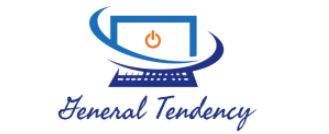 In today’s fast-paced world, many individuals view the concept of Early Retirement as a key milestone in their quest for financial independence, aiming to break free from the traditional nine-to-five grind and gain the freedom to live life on their own terms.
In today’s fast-paced world, many individuals view the concept of Early Retirement as a key milestone in their quest for financial independence, aiming to break free from the traditional nine-to-five grind and gain the freedom to live life on their own terms.
In today’s fast-paced world, the quest for financial independence has become a major goal for many individuals seeking to break free from the traditional nine-to-five grind. The idea of taking control of your finances and achieving the freedom to live life on your own terms is an attractive proposition. Financial independence is not just about accumulating wealth; it’s about having the power to make choices that align with your values and aspirations.
One strategy gaining traction in the financial independence community is FatFIRE. This approach encourages people to save and invest aggressively to reach a level of wealth that allows for a more luxurious lifestyle in retirement. By embracing the principles of FatFIRE, you can create a roadmap that leads to long-term financial security and the ability to enjoy life with fewer financial constraints. Whether you are just starting your journey or looking to refine your strategy, understanding the principles of FatFIRE will set you on the path to achieving your financial goals.
Understanding FatFIRE
FatFIRE is a term that refers to a more luxurious approach to financial independence compared to traditional FIRE (Financial Independence, Retire Early). Individuals pursuing FatFIRE aim to retire early with a significantly higher nest egg, allowing for a comfortable lifestyle that includes more discretionary spending on travel, hobbies, and leisure activities. This strategy is particularly appealing to those who enjoy a certain standard of living and do not want to compromise on the quality of life in retirement.
To achieve FatFIRE, one typically needs to accumulate a larger portfolio, often targeting a withdrawal rate that supports a higher annual spending amount. This could mean saving and investing until you have accumulated enough wealth to withdraw four percent or more of your savings each year, depending on personal financial goals. This approach requires careful planning and robust financial strategies that may include diversifying investments, maximizing retirement accounts, and consistently increasing your savings rate.
One of the key aspects of pursuing FatFIRE is the emphasis on lifestyle choices and sustainable financial habits. It encourages individuals to not only focus on the numbers but also to consider what truly brings happiness and fulfillment. By striking a balance between saving for the future and enjoying the present, those on the FatFIRE path can enjoy a rewarding journey to financial independence without sacrificing their desires and interests along the way.
Setting Your Financial Goals
Setting clear and achievable financial goals is essential for anyone pursuing financial independence. Begin by assessing your current financial situation, including your income, expenses, debts, and savings. This self-assessment allows you to identify where you stand and what you need to achieve in order to reach your desired level of financial freedom. Consider both short-term and long-term goals, as they will provide you with a roadmap for your journey.
Next, prioritize your goals based on your individual values and circumstances. For some, that may mean focusing on paying off debt, while for others, it might involve increasing savings or investing for the future. By determining what matters most to you, you can tailor your financial plan to align with your life aspirations. Break down your goals into actionable steps, making them more manageable and less overwhelming.
Finally, regularly review and adjust your financial goals as your life circumstances change. This adaptable approach ensures that you stay on track toward financial independence, no matter the challenges you may face. Remember, achieving financial independence is a journey that requires dedication, flexibility, and a commitment to continuous improvement in your financial habits.
Investment Strategies for FatFIRE
Achieving FatFIRE requires a robust investment strategy that prioritizes growth while balancing risk. One popular approach is to invest in a diverse portfolio that includes a mix of stocks, bonds, and alternative assets. Stocks generally provide high growth potential, while bonds offer stability and income. Consider focusing on index funds or exchange-traded funds, which can provide broad market exposure and reduce the risk associated with individual securities. Additionally, keep an eye on dividend-paying stocks to create a stream of passive income.
Real estate is another powerful tool for those pursuing Financial Independence through FatFIRE. Investing in rental properties can yield consistent cash flow and appreciate in value over time. Real estate investment trusts (REITs) are also an attractive option for those who prefer a more hands-off approach. They allow you to invest in real estate without the responsibility of managing properties directly. Combining real estate with other investments can enhance your overall portfolio performance and help buffer against market volatility.
Alternative investments can play a meaningful role in a FatFIRE strategy as well. Consider exploring options like peer-to-peer lending or investing in startups through crowdfunding platforms. These avenues can offer higher potential returns, albeit with increased risk. It’s essential to conduct thorough research and understand the risks involved before diving into alternative assets. A well-rounded investment strategy that leverages traditional and alternative investments will significantly contribute to achieving Financial Independence through FatFIRE.
Creating a Sustainable Budget
Creating a sustainable budget is a foundational step toward achieving financial independence. Start by tracking your income and expenses meticulously. Knowing how much you earn and where your money goes allows you to identify areas where you can cut costs. Use apps or spreadsheets to categorize your spending, which will help you visualize your financial habits. This awareness is crucial, as it sets the stage for making informed choices about your spending and saving.
Once you have a clear picture of your financial situation, it’s time to establish realistic spending goals aligned with your values and long-term objectives. Consider adopting the 50/30/20 rule, allocating 50% of your income to necessities, 30% to discretionary spending, and 20% to savings and debt repayment. Adjust these percentages as needed based on your lifestyle and financial goals, ensuring that your budget is both practical and sustainable over the long term.
Finally, remember that a budget should be a living document. Regularly review and adjust it according to your life circumstances, income changes, or unexpected expenses. This flexibility is key to maintaining financial independence. Celebrate small milestones along the way, as they will motivate you to stick to your plan. By continuously refining your budget and developing disciplined spending habits, you will be well on your way to achieving the freedom that financial independence offers.
Building Passive Income Streams
Creating passive income streams is essential for achieving financial independence, allowing you to earn money without active involvement. One of the most effective ways to establish passive income is through investments in dividend-paying stocks. These stocks provide regular cash payouts, which can be reinvested or used to fund your lifestyle. By carefully selecting high-quality companies with a strong track record of paying dividends, you can build a reliable source of income that grows over time.
Another avenue for generating passive income is real estate investment. Owning rental properties can yield consistent cash flow, especially in high-demand areas. Consider investing in residential or commercial properties, or even exploring real estate investment trusts (REITs) if direct property management feels daunting. By leveraging mortgage financing, you can maximize your returns and create a steady stream of rental income while benefiting from property appreciation.
Lastly, creating digital products or content is a modern approach to generating passive income. This could involve writing eBooks, developing online courses, or producing art and photography for sale. Once created, these products can continue to generate revenue with minimal ongoing effort. By focusing on your expertise and providing value through your digital offerings, you can tap into a global market and create a sustainable income stream that supports your journey to financial independence.




